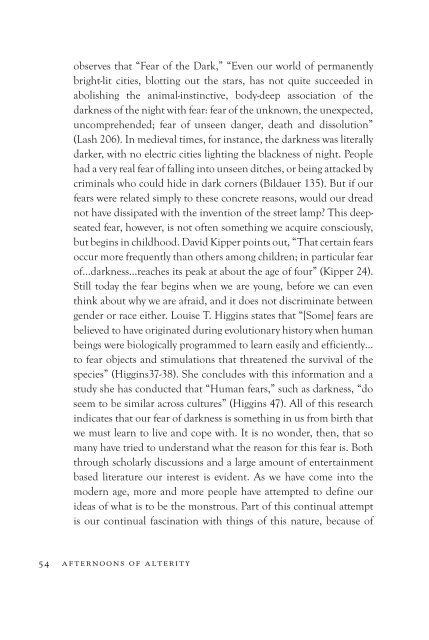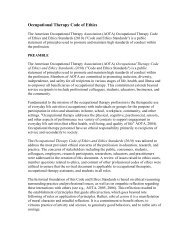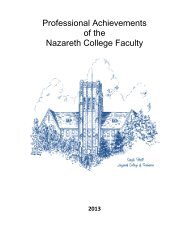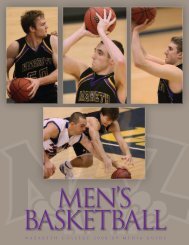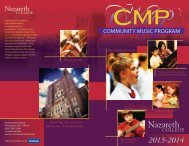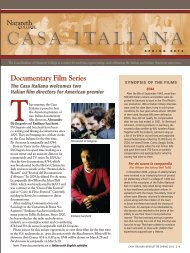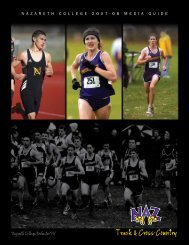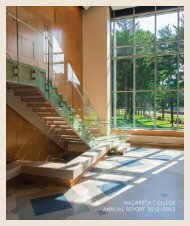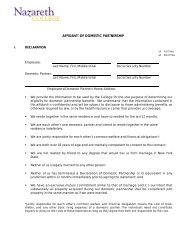Afternoon of Alterity - Nazareth College
Afternoon of Alterity - Nazareth College
Afternoon of Alterity - Nazareth College
Create successful ePaper yourself
Turn your PDF publications into a flip-book with our unique Google optimized e-Paper software.
observes that “Fear <strong>of</strong> the Dark,” “Even our world <strong>of</strong> permanentlybright-lit cities, blotting out the stars, has not quite succeeded inabolishing the animal-instinctive, body-deep association <strong>of</strong> thedarkness <strong>of</strong> the night with fear: fear <strong>of</strong> the unknown, the unexpected,uncomprehended; fear <strong>of</strong> unseen danger, death and dissolution”(Lash 206). In medieval times, for instance, the darkness was literallydarker, with no electric cities lighting the blackness <strong>of</strong> night. Peoplehad a very real fear <strong>of</strong> falling into unseen ditches, or being attacked bycriminals who could hide in dark corners (Bildauer 135). But if ourfears were related simply to these concrete reasons, would our dreadnot have dissipated with the invention <strong>of</strong> the street lamp? This deepseatedfear, however, is not <strong>of</strong>ten something we acquire consciously,but begins in childhood. David Kipper points out, “That certain fearsoccur more frequently than others among children; in particular fear<strong>of</strong>…darkness…reaches its peak at about the age <strong>of</strong> four” (Kipper 24).Still today the fear begins when we are young, before we can eventhink about why we are afraid, and it does not discriminate betweengender or race either. Louise T. Higgins states that “[Some] fears arebelieved to have originated during evolutionary history when humanbeings were biologically programmed to learn easily and efficiently…to fear objects and stimulations that threatened the survival <strong>of</strong> thespecies” (Higgins37-38). She concludes with this information and astudy she has conducted that “Human fears,” such as darkness, “doseem to be similar across cultures” (Higgins 47). All <strong>of</strong> this researchindicates that our fear <strong>of</strong> darkness is something in us from birth thatwe must learn to live and cope with. It is no wonder, then, that somany have tried to understand what the reason for this fear is. Boththrough scholarly discussions and a large amount <strong>of</strong> entertainmentbased literature our interest is evident. As we have come into themodern age, more and more people have attempted to define ourideas <strong>of</strong> what is to be the monstrous. Part <strong>of</strong> this continual attemptis our continual fascination with things <strong>of</strong> this nature, because <strong>of</strong>54 afternoons <strong>of</strong> alterity


